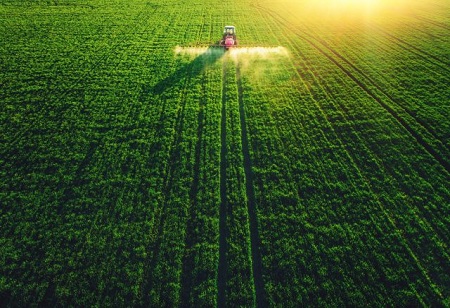In the recent years, the
agrochemical industry has significantly transformed the agricultural landscape in India, giving farmers better yield and crop protection, year after year. Globalisation of the
agrochemical industry has a huge impact on the Indian market. With the high rate of population growth, increasing the need for food production and economic growth, the market for agrochemicals gets pushed ahead. The Indian agrochemical market size reached a value of almost USD 4.5 billion in the year 2020. The market is further expected to grow at a CAGR of 8.6 percent between 2021 and 2026 to reach a value of almost USD 7.4 billion by 2026.
Current Scenario of the Market
DV Sadananda Gowda, Minister of Chemicals and Fertilizers, Government of India has said “the Indian Agrochemical Industry has huge unrealized potential for growth due to very low level of agrochemical consumption as compared to global norms”. Indian agrochemical industry is positively influenced by the Indianization of the industry, which has fuelled the sales of agrochemical products. India’s agrochemical market forms 15 percent of the global market. The global agrochemical’s value chain comprises raw material suppliers who supply both petrochemical derivatives as well as natural feedstock.
At present, India is the fourth largest producer of agrochemicals after the US, Japan and China. Its key segment includes insecticides, fungicides, herbicides, bio-pesticides, and others. The Indian agrochemical market is highly fragmented with fierce competition from a large number of organised players. On a year-to-date basis, the market has witnessed a strong bullish trend. In the past month, Insecticides India has surged over 35 percent and nearly 60 percent year-to-date.
Recent Trends in the Industry
Biopesticides are gaining popularity in the market. With rising awareness regarding the impact of chemical insecticides on the health of humans, the gradual shift towards the usage of biopesticides by farmers has been observed. The segment is likely to witness a significant growth rate over the forecast period.
Since most countries amended their policies to minimize the use of chemical pesticides and instead promote the use of biopesticides, this kind of growth is supported.
Biopesticides are being largely adopted by the agriculture industry, owing to a smaller number of regulations on product approvals and the low cost of product development. It takes nearly USD 250 million and 10 years to develop new pesticide products. Also, it takes 12-13 years and roughly USD 130 million for the development of GM crops. However, a biopesticide or biological can enter the market in 3-5 years, with roughly USD 3-5 million development cost, which is impacting a positive trend of the biopesticides market across the world.
China accounts for the largest share among other countries in the global fertilizer market. Chinese consumption of inorganic N,P and K fertilizers is reducing due to reducing cropland area. The cropland area under fruits and vegetables is increasing, while the area under cereals is decreasing. The large production of cereal crops, like rice and wheat in India, is the major factor supporting market growth. Consumption of pesticides is rising steadily in India.
In 2019-2020, 72,515 metric ton of pesticides were used by farmers all over the country. Data reveals that only eight states in India account for more than 70 percent of the total consumption. With a growing emphasis on environment and sustainability, Indian government is enforcing clean production and environment friendly agriculture policies, which may lead to a decline in synthetic pesticide usage in the country. However, the government has encouraged the use of microbial pesticides, which is expected to grow rapidly in the coming years.
Need for Improvement in Certain Areas
The continued use of agrochemicals is identified to have adverse effects on animal life, human life and general soil health. It causes some of the serious diseases such as asthma, alzheimer and diabetes are caused by the use of agrochemicals. Agrochemicals are vital to protect crops and maximise yields, but farmers in India often lack information about what is available in the market and how to use them in the best possible way. Public and private sectors must work in partnership to increase awareness among farmers for the right and timely use of agrochemicals. Also, government should take a lead in organising awareness programs and reach out to farmers even in the remote areas.
By building strategically placed agrochemical units, not only the supply chain and inventor management hiccups can be avoided, but also the transportation costs related to raw materials can be brought down relatively. Also, embracing emerging new age technologies such as IoT (Internet of Things) can help in real time tracking of farm to fork and should be used effectively by transporters. The need to create new products and molecules that can benefit the local farmers and suit their agricultural conditions should be seen as an integral part of agricultural development.
Future Ahead
As the demand for food products is increasing, the landmass available for agriculture is gradually decreasing due to the heightened effect of urbanisation, which is providing an impetus for the farmers to use different agrochemicals to increase land productivity and maintain soil health. The positive trend and the integrating farming practices in the country are expected to propel the industry growth rate of agrochemicals in India in the future.
